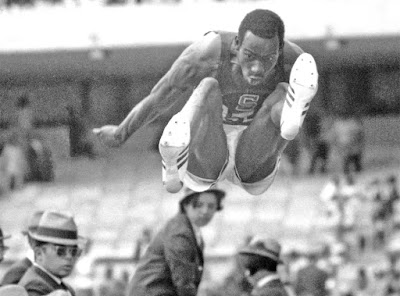 |
| Photo: Courtesy of Pinterest |
Apollo 5: Testing the Lunar Module
On January 22, 1968, NASA launched Apollo 5, an uncrewed mission designed to test the Lunar Module (LM) in space for the first time. The primary objective was to validate the LM's ascent and descent engines in the vacuum of space, ensuring that it could safely transport astronauts from lunar orbit to the moon's surface and back.
Key Personalities:
- Thomas J. Kelly: As the chief designer of the Lunar Module at Grumman Aircraft Engineering Corporation, Kelly played a crucial role in the development and testing of the LM.
- George Low: The manager of the Apollo Spacecraft Program Office, Low oversaw the design, construction, and testing of the spacecraft, ensuring they met NASA’s stringent requirements.
The mission successfully demonstrated the LM’s capabilities, despite some challenges, such as premature engine shutdowns. The data gathered from Apollo 5 was critical for the subsequent development and refinement of the LM.
Apollo 6: The Final Uncrewed Test of Saturn V
Apollo 6, launched on April 4, 1968, was the second and final uncrewed test flight of the Saturn V launch vehicle. This mission aimed to verify the rocket's structural integrity and performance under conditions simulating a lunar mission. Despite encountering several technical issues, including oscillations known as "pogo" and engine failures, the mission successfully demonstrated the rocket's capability to perform a translunar injection.
Key Personalities:
- Werner von Braun: As the director of the Marshall Space Flight Center, von Braun was instrumental in the development of the Saturn V rocket. His expertise in rocketry ensured the success of the Saturn V program.
- Rocco Petrone: The director of launch operations at Kennedy Space Center, Petrone was responsible for the intricate processes involved in launching the Saturn V.
Despite the setbacks, the data from Apollo 6 helped NASA refine the Saturn V design, ensuring its reliability for future manned missions.
 |
| Photo: Courtesy of Pinterest |
Launched on October 11, 1968, Apollo 7 was the first manned mission in the Apollo program. This 11-day Earth-orbital mission tested the Command and Service Module (CSM) systems, including life support, propulsion, and communication. The mission’s success was crucial in restoring confidence in NASA after the tragic Apollo 1 fire.
Key Personalities:
- Walter M. Schirra Jr.: Commander of Apollo 7, Schirra was a veteran astronaut who had previously flown on Mercury-Atlas 8 and Gemini 6A. His leadership was vital in ensuring the mission's success.
- Donn F. Eisele: As the Command Module Pilot, Eisele was responsible for navigating the spacecraft and managing onboard systems.
- R. Walter Cunningham: The Lunar Module Pilot, Cunningham, though his role did not involve an actual Lunar Module for this mission, was crucial in conducting scientific experiments and monitoring systems.
Apollo 7 was a resounding success, providing critical data on the performance of the CSM and proving the readiness of the spacecraft for future manned lunar missions.
Apollo 8: The First Manned Mission to Orbit the Moon
The crowning achievement of 1968 was Apollo 8, launched on December 21, 1968. It was the first manned mission to leave Earth orbit, reach the moon, orbit it, and safely return. This mission provided unprecedented views of the lunar surface and Earth, including the iconic "Earthrise" photograph. Apollo 8 demonstrated key mission elements such as navigation, communication, and life support in deep space.
Key Personalities:
- Frank Borman: As the commander of Apollo 8, Borman had previously flown on Gemini 7. He was responsible for the overall mission success, maintaining crew safety, and navigating the spacecraft.
- James A. Lovell Jr.: The Command Module Pilot, Lovell, had extensive experience from his flights on Gemini 7 and Gemini 12. His role in navigating the spacecraft was crucial.
- William A. Anders: The Lunar Module Pilot, Anders, although the mission did not include a Lunar Module, he played a significant role in operating the onboard cameras and conducting scientific observations.
Apollo 8's successful lunar orbit and return provided critical data and experience for the eventual moon landing by Apollo 11. The mission also marked a significant psychological milestone in the space race, showcasing NASA's capabilities to the world and bolstering public support for the Apollo program.
Impact and Legacy
The successes of the Apollo missions in 1968 were pivotal in advancing NASA’s goals and setting the stage for the historic lunar landings that followed. Apollo 7 proved the Command and Service Modules' readiness for manned missions. Apollo 8’s successful lunar orbit provided essential data and a morale boost, demonstrating that a manned lunar landing was within reach.
The achievements of 1968 showcased the extraordinary collaboration between engineers, scientists, astronauts, and mission control. These missions underscored NASA’s ability to overcome technical challenges and push the boundaries of human space exploration. The groundwork laid by these missions was instrumental in ensuring the success of Apollo 11 and subsequent lunar missions.



.jpg)

